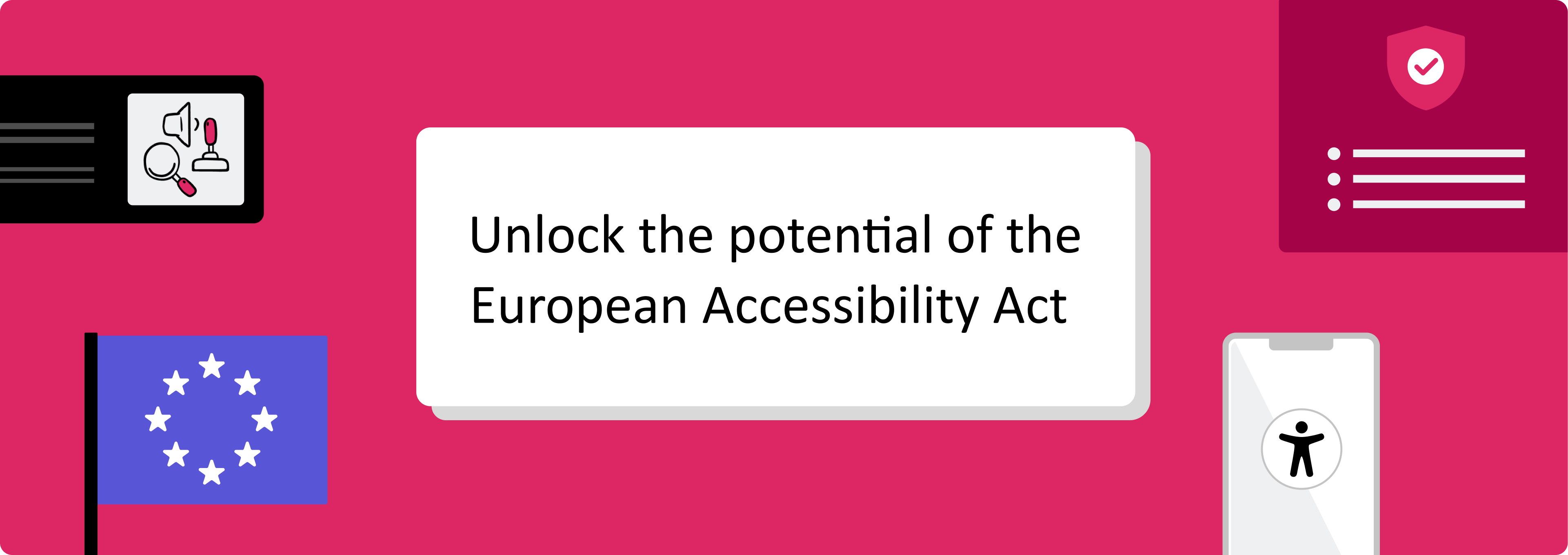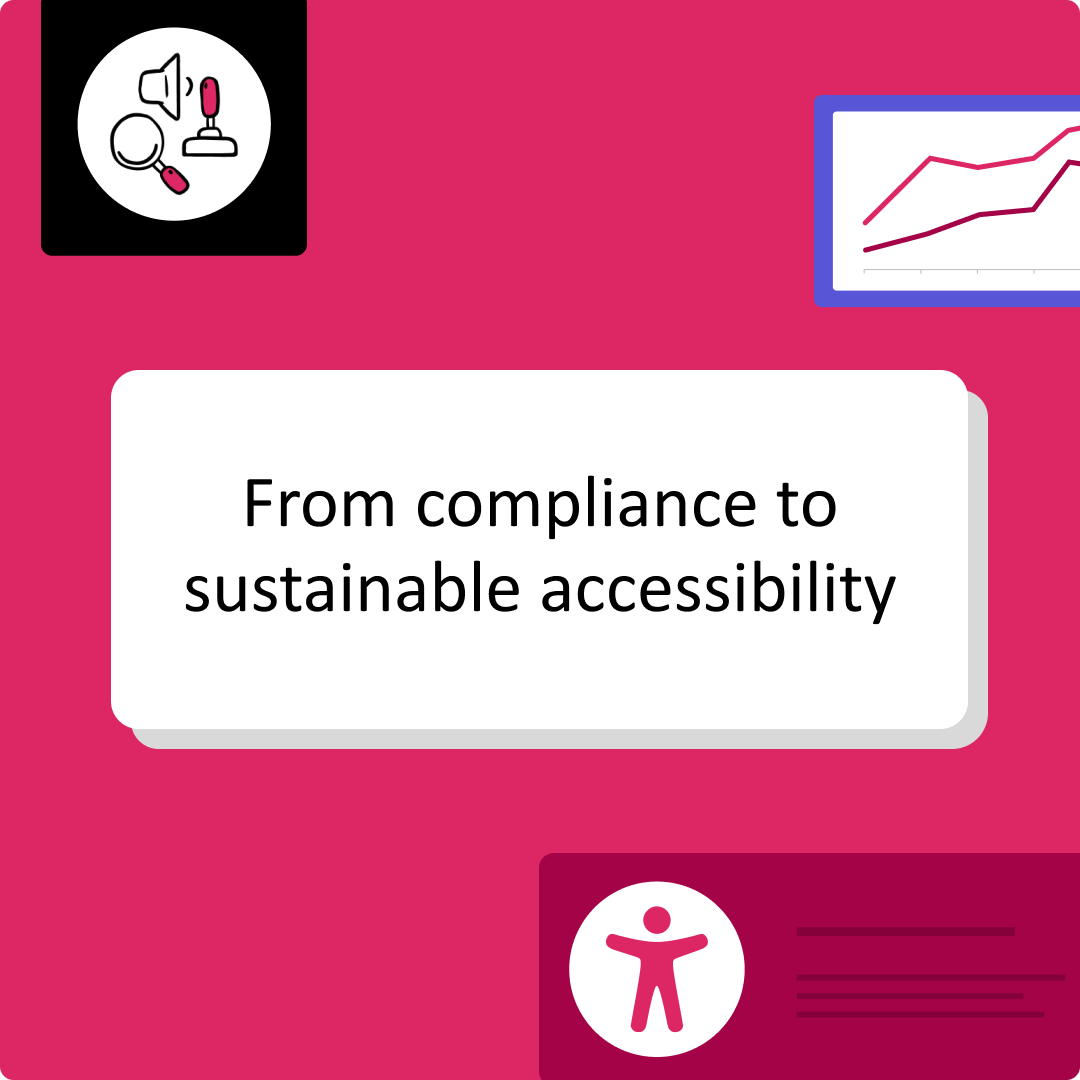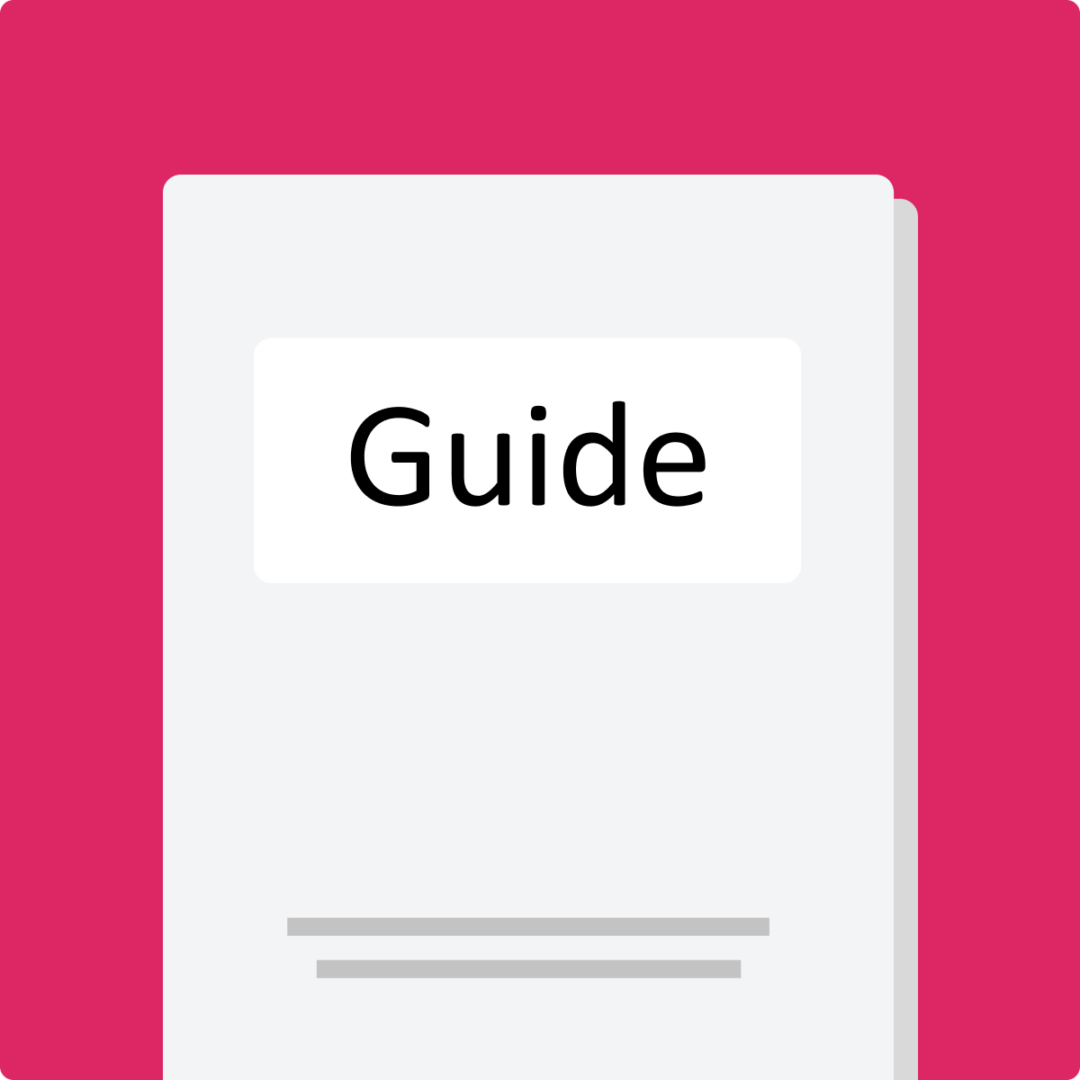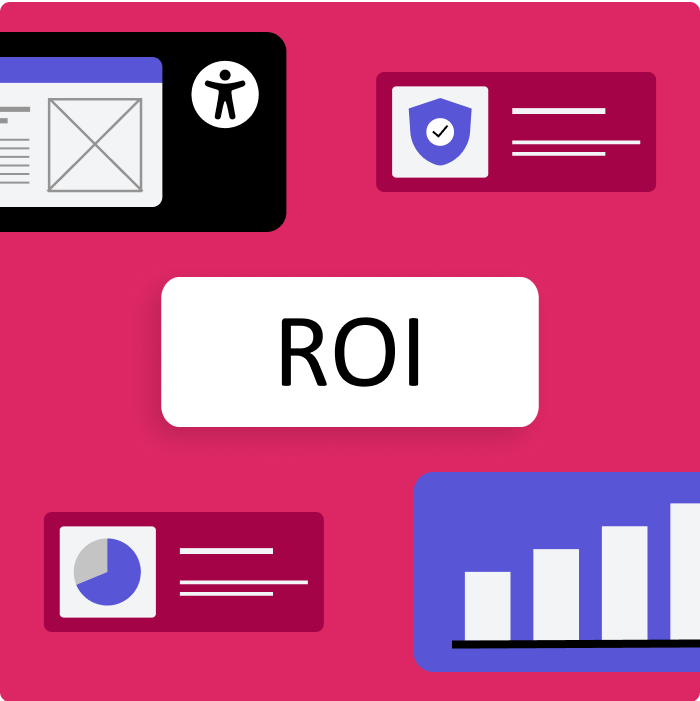
Unlock the potential of the European Accessibility Act
The European Accessibility Act (EAA) is more than just compliance regulation — it’s an opportunity to become a leader in accessibility, innovation, and inclusion. The EAA sets the stage for a future where products and services across Europe are accessible for everyone. With enforcement beginning on June 28, 2025, the clock is ticking for companies to prepare to follow this new law.
Compliance doesn’t have to be a burden—it can be a catalyst for growth, innovation, and better customer experiences. Fable helps world-class organizations build their best and most inclusive products.
Why the EAA matters to your company
Whether your business is headquartered in the European Union (EU) or simply serves European customers, the EAA is a game-changer. It applies to a broad range of products and services—from computers and smartphones to banking services and e-commerce. By meeting the EAA’s requirements, your company not only avoids penalties but also demonstrates a commitment to inclusivity that can set you apart from the competition.
All governments and businesses operating within the EU must follow it. That includes organizations located outside of the EU that sell goods and provide services in the EU.
The EAA requires that your products and services be accessible to everyone, including people with disabilities. This includes ensuring that they are usable by people with varying levels of vision, hearing, speech, mobility, and cognition.
Products and services covered by the EAA
New products and services must be accessible by the 2025 deadline. There is a transitional period where products already in the market have an additional five years to be made accessible, extending the deadline to June 28, 2030.
Products that must be made accessible include:
- computers and operating systems
- ATMs, ticketing and check-in machines
- smartphones
- TV equipment related to digital television services
- telephony services and related equipment
- audio-visual media services such as television broadcast and related consumer equipment
- services related to air, bus, rail and passenger ships
- banking services
- e-books
- e-commerce
What does the EAA require?
For maximum accessibility and compatibility with future technology, the EAA outlines functional requirements. Products and services must work for people with no or limited:
- Vision
- Colour vision
- Hearing
- Speech
- Mobility (specifically dexterity, strength, and reach)
- Cognition (i.e. they must be simple and easy to use)
Products and services must also minimize the risk of photosensitive seizures (i.e. by not having lights that flash at speeds that could trigger a seizure).
People must also have a way to maintain their privacy while using accessibility features.
The EAA doesn’t include technical standards for web accessibility because they are included in Directive (EU) 2016/2102 known as the Web Accessibility Directive. The technical standard included in that directive is EN 301 549 (PDF) which references the Web Content Accessibility Guidelines (WCAG).
The EAA has general accessibility requirements for web and mobile in Annex 1, section 3:
“The provision of services in order to maximise their foreseeable use by persons with disabilities, shall be achieved by:
[…] making websites, including the related online applications, and mobile device-based services, including mobile applications, accessible in a consistent and adequate way by making them perceivable, operable, understandable and robust.”
Perceivable, Operable, Understandable and Robust are the four principles of accessibility from WCAG.
The EAA also includes examples of how to meet the accessibility requirements. Here are a few of the examples related to digital accessibility:
- Use clear, consistent language with a logical structure for easier understanding.
- Provide subtitles (often called captions in the U.S.) along with videos.
- Allow users to enlarge text or zoom in on images.
- Make touch screen buttons big and space them out so they are easier to press.
- Provide a digital version of print product instructions that a screen reader user can read.
EAA exemptions
Microenterprises
Microenterprises with less than 10 employees and an annual turnover less than EUR 2 million or an annual balance sheet total less than EUR 2 million are exempt from the EAA accessibility requirements for services.
“The requirements and obligations of this Directive should therefore not apply to microenterprises providing services within the scope of this Directive.”
Microenterprises have limited requirements for documenting accessibility assessments for products.
“Microenterprises dealing with products shall be exempted from the requirement to document their assessment.”
Some website and mobile app content
The EAA does not apply to the following content on websites and mobile applications:
- pre-recorded time-based media published before June 28, 2025
- office file formats published before June 28, 2025
- online maps and mapping services, if essential information is provided in an accessible digital manner for maps intended for navigational use
- third-party content that is neither funded, developed by, or under the control of the organization using the content
- archived content that is not updated or edited after June 28, 2025
There is also an exemption if accessibility would impose a disproportionate burden or require a significant change to products and services.
National requirements for accessibility
Every nation will monitor their own jurisdiction and may also have their own set of requirements. Be sure to consult with legal counsel to understand what is required for your organization. Many national accessibility requirements ask organizations to include details on how accessibility is managed, including how accessibility training is provided, and what mechanism is used for monitoring accessibility on an ongoing basis. Publishing an accessibility statement is another common national accessibility requirement. These elements are a best practice for any organization looking to mature their accessibility practice in a sustainable way.
The importance of involving people with disabilities
The EAA mentions using a “design for all” approach in recital 50:
“Accessibility should be achieved by the systematic removal and prevention of barriers, preferably through a universal design or ‘design for all’ approach.”
Recitals in an EU act aren’t legally binding, but they do explain the goals of the act and may be used to interpret anything that is unclear in the act.
“Design for all“ is an EU directive that is currently being revised. It makes recommendations for “identifying diverse needs, characteristics, capabilities, and preferences, by directly or indirectly involving users, and by using knowledge about accessibility in its procedures and processes.”
User testing also comes into play in Annex 1, section 7. Here, the EAA states that functional performance criteria can be used instead of technical standards, but only if they result in equivalent or increased accessibility. Functional performance criteria include things like usage without vision, with limited vision, without perception of colour, etc. that could be determined through user testing.
The EAA promises greater access to a broader range of products and services, fostering inclusion and equal participation in society. To achieve that goal, companies must involve people with disabilities in the process of designing products and services.
Elevate your brand through accessibility
Imagine your brand as a leader in accessibility, recognized not just for compliance, but for truly understanding and addressing the needs of all your customers. The EAA offers an opportunity to build trust and loyalty among the 101 million people or one in four people adults in the EU. By embedding accessibility into your products and services, you’re not just checking a box — you’re creating experiences that everyone can enjoy.
The EAA offers an opportunity to turn regulatory requirements into a strategic advantage. Fable empowers your teams to design, develop, and deliver products that prioritize usability, not just accessibility, for people with disabilities.
How Fable helps teams
Fable Engage enables your team to connect directly to people with disabilities remotely and on-demand, accelerating your research, design, and development.
- Continuous testing and research: Testing products directly with assistive technology users helps teams assess how usable they are for people with disabilities. Collecting feedback on an ongoing basis ensures you are addressing not only accessibility but usability from product development to maintenance.
- Benchmarking: Fable Engage helps teams measure progress in accessibility through metrics like completion rates, Accessible Usability Scale (AUS) and reports that help demonstrate efforts over time.
- Co-design: Work alongside people with disabilities to gain valuable insights that inform the design and delivery of accessible banking, transport, and other essential services. By involving people with disabilities in the design process, you ensure that your solutions are built to be user-friendly from the start and meet the needs of a broad range of consumers.
- Subject Matter Expertise: Fable’s in-house team of experts are available to help, regardless of how far along your organization is in their accessibility journey.
Fable Upskill ensures your product teams have the knowledge and skills to build truly inclusive products through custom training.
Upskill’s video-based courses are customized by accessibility experts specifically for your team’s tech stacks and roles. Courses like Accessible Product Management and Accessibility Research incorporate your products and designs, enabling your team to apply their new skills immediately.




